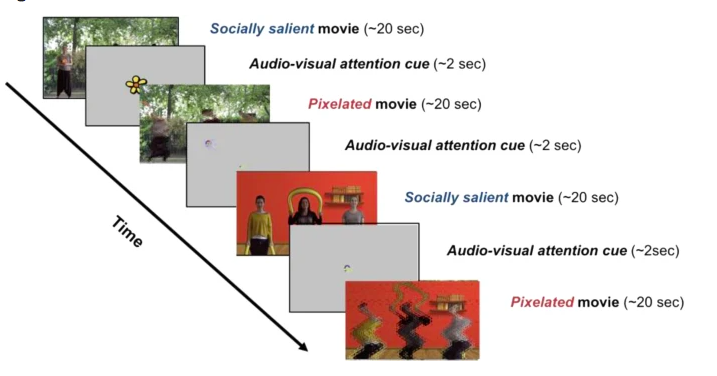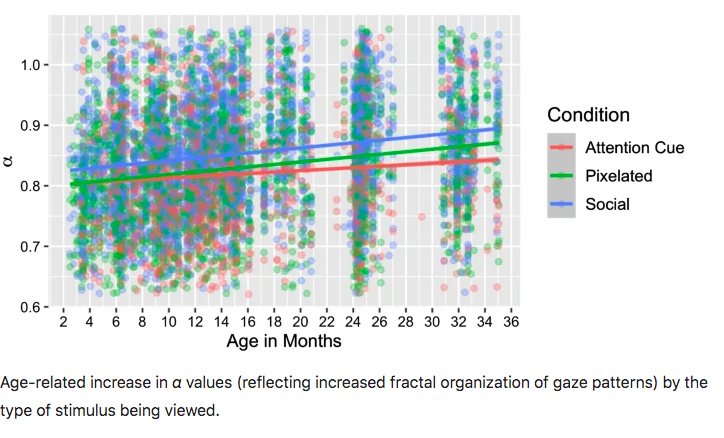Abstract
The development of selective visual attention is critical for effectively engaging with an ever-changing world. Its optimal deployment depends upon interactions between neural, motor, and sensory systems across multiple timescales and neurocognitive loci. Previous work illustrates the spatio-temporal dynamics of these processes in adults, but less is known about this emergent phenomenon early in life. Using data (n = 190; 421 visits) collected between 3 and 35 months of age, we examined the spatio-temporal complexity of young children’s gaze patterns as they viewed stimuli varying in semantic salience. Specifically, we used detrended fluctuation analysis (DFA) to quantify the extent to which infants’ gaze patterns exhibited scale invariant patterns of nested variability, an organizational feature thought to reflect self-organized and optimally flexible system dynamics that are not overly rigid or random. Results indicated that gaze patterns of even the youngest infants exhibited fractal organization that increased with age. Further, fractal organization was greater when children (a) viewed social stimuli compared to stimuli with degraded social information and (b) when they spontaneously gazed at faces. These findings suggest that selective attention is well-organized in infancy, particularly toward social information, and indicate noteworthy growth in these processes across the first years of life.
Publication
Scientific Reports
Example of the sequence of stimuli presented at each visit. Socially salient movies featured women moving with child-friendly objects and the pixelated movies featured blurred, or pixelated, versions of the women moving with child-friendly objects. |

